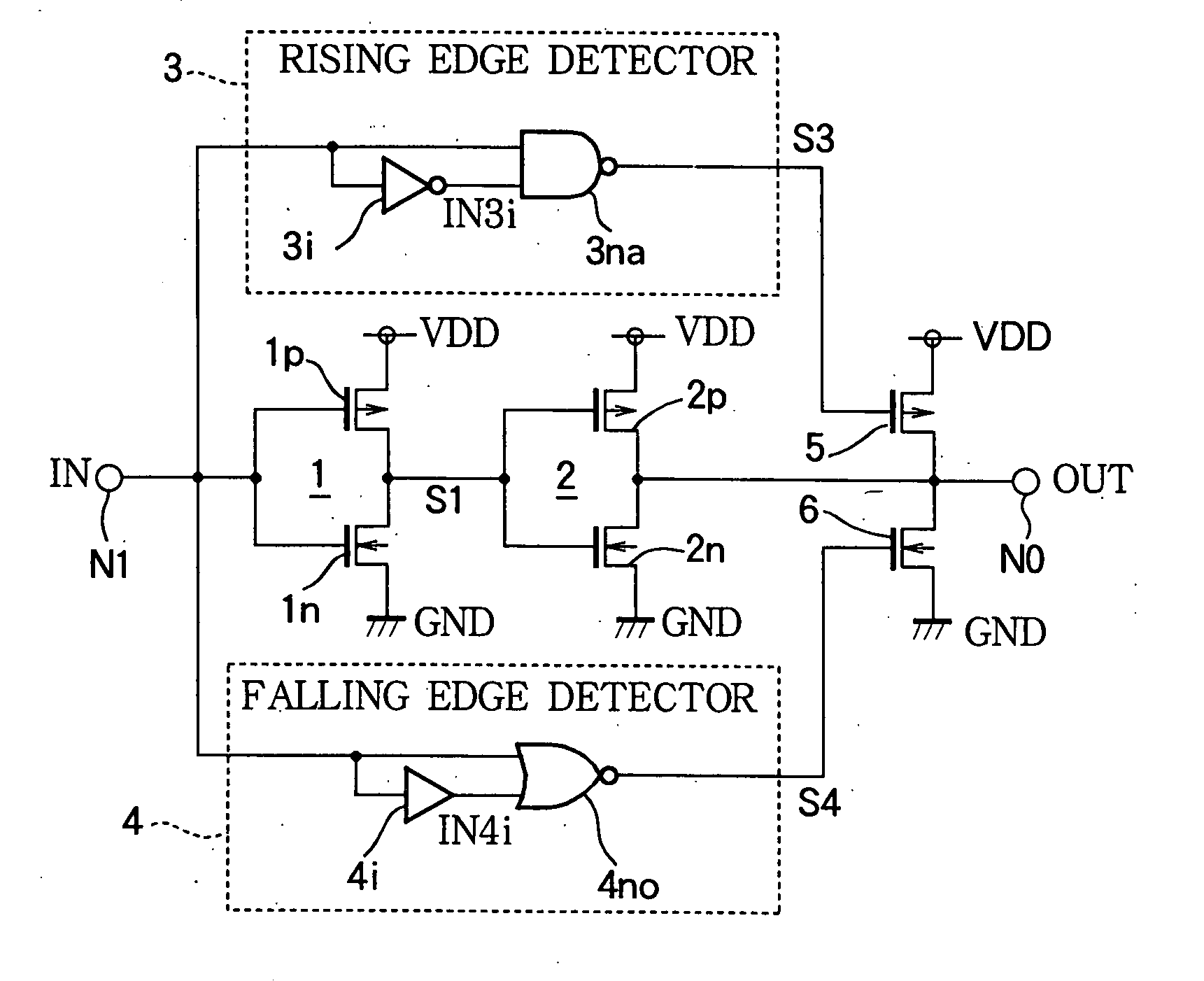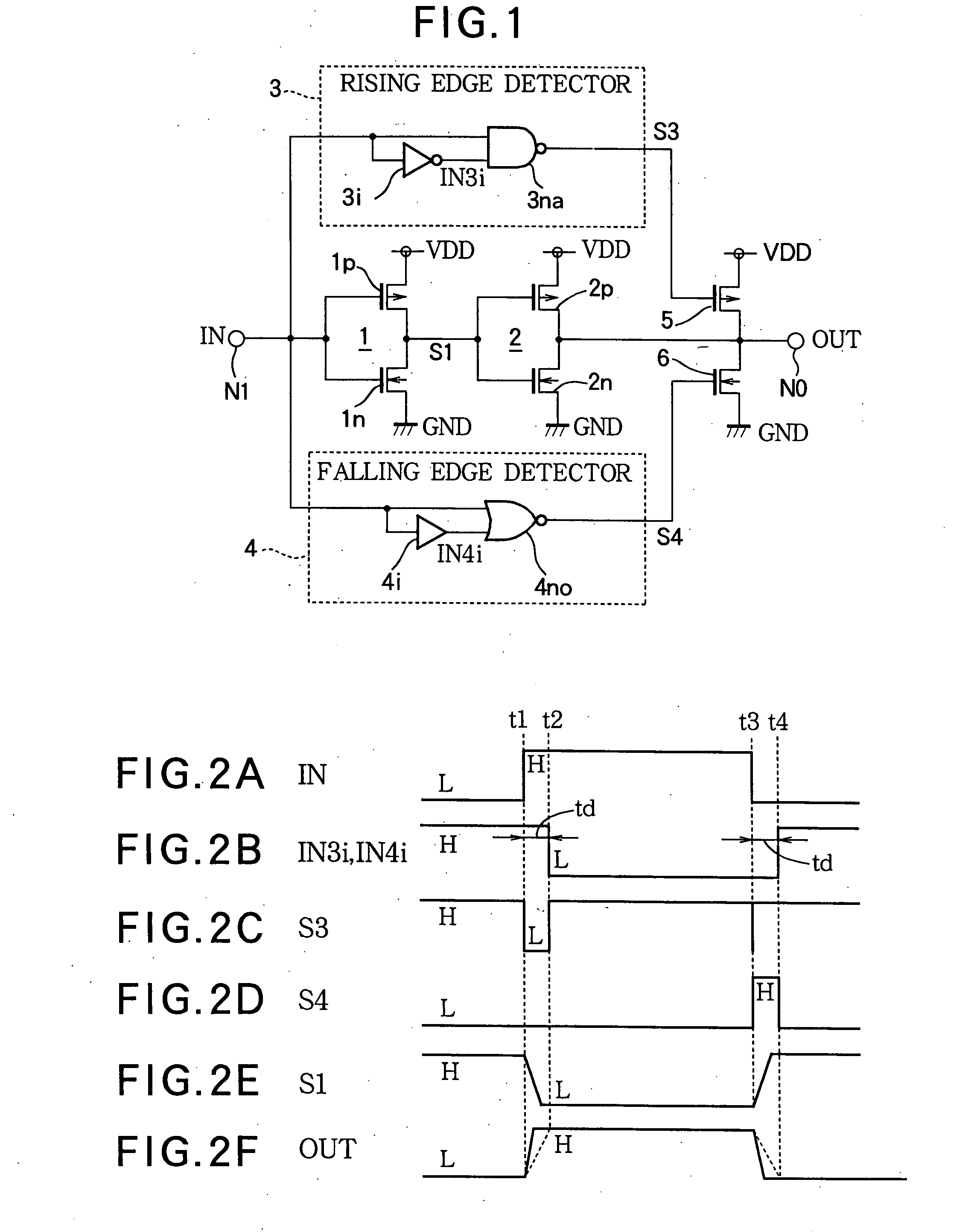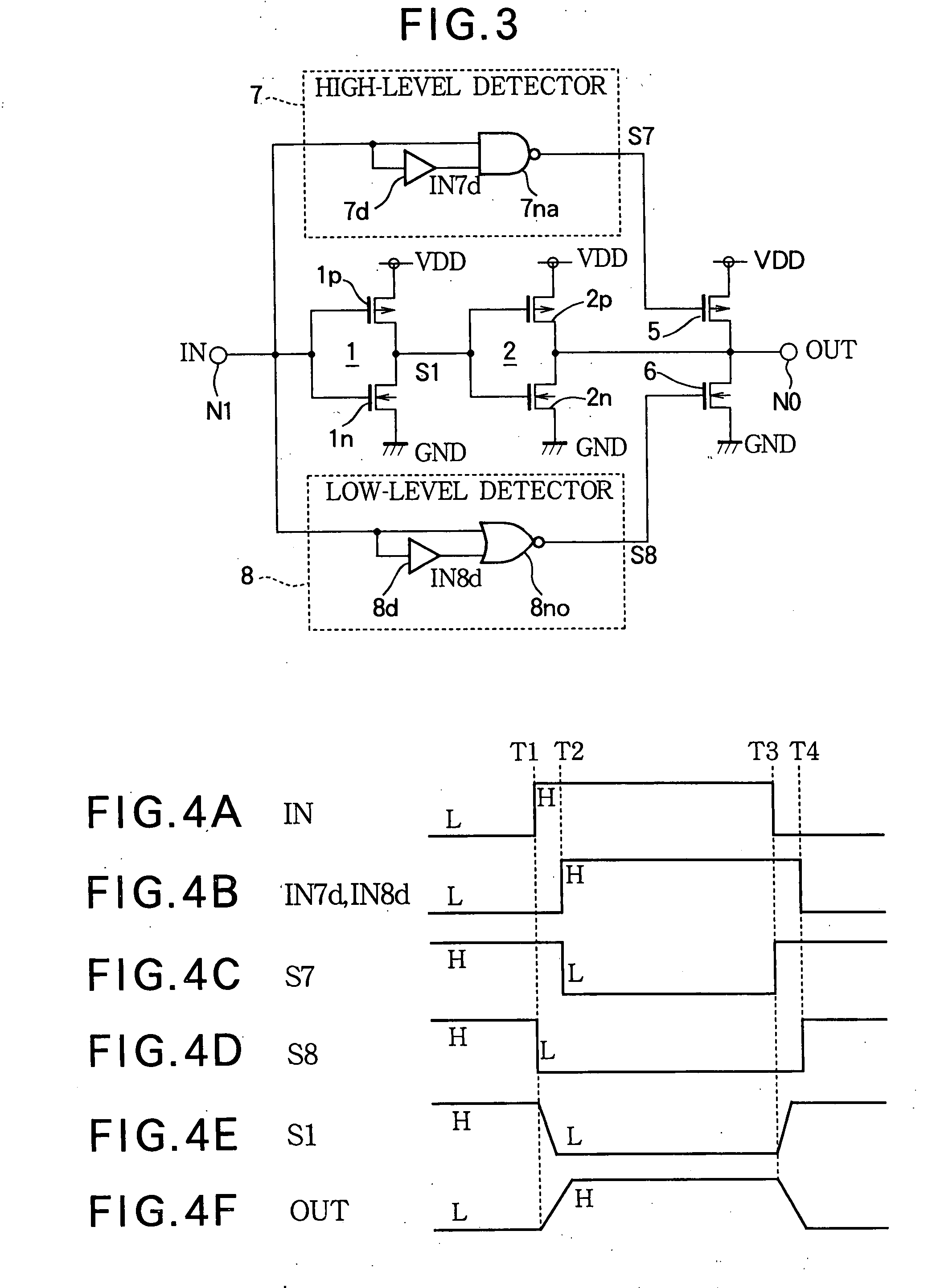Driving circuit
- Summary
- Abstract
- Description
- Claims
- Application Information
AI Technical Summary
Benefits of technology
Problems solved by technology
Method used
Image
Examples
embodiment 1
[0039]FIG. 1 shows a driving circuit of Embodiment 1 of the present invention.
[0040]The illustrated circuit includes an input node NI at which an input signal IN is supplied. Connected to the input node NI is a first CMOS inverter 1 comprising a PMOS lp and an NMOS in connected between a power supply potential node VDD and a ground potential node GND.
[0041]Connected to the output side of the CMOS inverter 1 is a second CMOS inverter 2 comprising a PMOS 2p and an NMOS 2n connected between the power supply potential node VDD and the ground potential node GND. The output side of this CMOS inverter 2 is connected to an output node NO, through which the output signal OUT is output. Connected to the input node NI of the driving circuit is a rising edge detector 3 and a falling edge detector 4. The first and the second CMOS inverters 1 and 2 in combination form a driving section for power-amplifying the input signal, and outputting an amplified signal to the output node NO.
[0042]A PMOS 5 i...
embodiment 2
[0059]FIG. 3 shows a driving circuit according Embodiment 2 of the present invention. Reference numerals identical to those in FIG. 1 denote identical or corresponding elements.
[0060]The driving circuit shown in FIG. 3 is provided with a high-level detector 7, serving as a first detector in place of the rising edge detector 3, and a low-level detector 8, serving as a second detector, in place of the falling edge detector 4.
[0061]The high-level detector 7 outputs a high-level detection signal S7 which goes “L” upon expiration of a certain time period after the input signal IN rises from “L” to “H”. When the input signal IN falls from “H” to “L”, the high-level detection signal S7 is returned to “H” instantly. The falling and rising of the high-level detection signal S7 may be described as “commencement” and “termination” of the high-level detection signal S7. The high-level detector 7 comprises a delay element 7d for delaying the input signal IN by a certain time period, and a NAND g...
PUM
 Login to View More
Login to View More Abstract
Description
Claims
Application Information
 Login to View More
Login to View More - R&D
- Intellectual Property
- Life Sciences
- Materials
- Tech Scout
- Unparalleled Data Quality
- Higher Quality Content
- 60% Fewer Hallucinations
Browse by: Latest US Patents, China's latest patents, Technical Efficacy Thesaurus, Application Domain, Technology Topic, Popular Technical Reports.
© 2025 PatSnap. All rights reserved.Legal|Privacy policy|Modern Slavery Act Transparency Statement|Sitemap|About US| Contact US: help@patsnap.com



